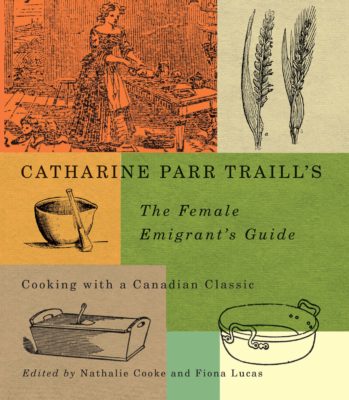For three days, as I made Mrs. Traill’s favourite bread recipe using a hop-based barm she strongly recommended, my kitchen smelled like beer. On the morning of the first day, I prepared the leavening agent, discovering in the process that the smell of beer comes from the hop plant’s flowers (obvious, but I had never thought about it), and let it rise all day. In the afternoon of the second day, I prepared what bakers call a “sponge” with a mixture of flour and potatoes-turned-porridge and let that rise all night. On the morning of the third day, I kneaded the dough and let it rise for four hours, then I shaped the bread loaves and let those rise for two hours before baking said loaves. The resulting bread is tasty, wholesome, dense, and doesn’t taste like beer. I certainly don’t get to feel warm dough between my hands or the same sense of accomplishment when I make bread in four hours by pressing a button on a machine, but being a pioneer woman sure takes patience and commitment.
This commitment and its related hardships were well known to Catharine Parr Traill (sister to Susanna Moodie, author of Roughing it in the Bush), which is why she decided to write The Female Emigrant’s Guide (1855). More than a century and a half later, Nathalie Cooke, a professor of at McGill who specializes in English cookery literature, and Fiona Lucas, co-founder of the Culinary Historians of Canada, decided to re-edit the book in the hope of reviving “interest in some simple, nutritious, and forgotten nineteenth-century recipes and menus” at a time where mindful eating is increasingly a way of life.

Catharine Parr Traill’s The Female Emigrant’s Guide
Cooking with a Canadian Classic
Edited by Nathalie Cooke and Fiona Lucas
McGill-Queen’s University Press
$39.95
paper
608pp
9780773549302
We no longer live in log cabins in the bush, but it is still interesting to see how the country is described to potential immigrants, especially when Traill explains typical weather patterns and activities for each month of the year: “[February] is indeed the coldest of the Canadian winter months and though the lengthening of the days gives you more sunshine it seems to add little to your warmth.” Some of her descriptions of winter and Christmas are very rosy, as she is the first to admit: “Some will think my sketch too fair a one, because they will experience many changes and discomforts; and seasons are brightened or darkened by our individual feelings and domestic circumstances.” A feeling that still holds true today.
But the book is much more than a simple reprinting of Traill’s guide; it is a glimpse into nineteenth-century culinary history in Canada. As such, after the original guide, the authors added a 250-page “Guide to Traill’s World,” in which they explore what Traill typically fed her family, what three sample families of different financial means would normally eat, and the history of cooking measurements. They also modernized certain recipes (mostly breads, biscuits, and puddings), listed modern ingredients readers can use, and explained how to convert the other recipes. Though some recipes, such as roasted black squirrel and pigeon pie, might not need additional explanation.
Catharine Parr Traill’s The Female Emigrant’s Guide: Cooking with a Canadian Classic is a fascinating read for anybody interested in Canadian domestic history and cooking. Maybe, after the 100-Mile Diet and the Paleo Diet, the Pioneer Diet will become a thing.mRb






0 Comments